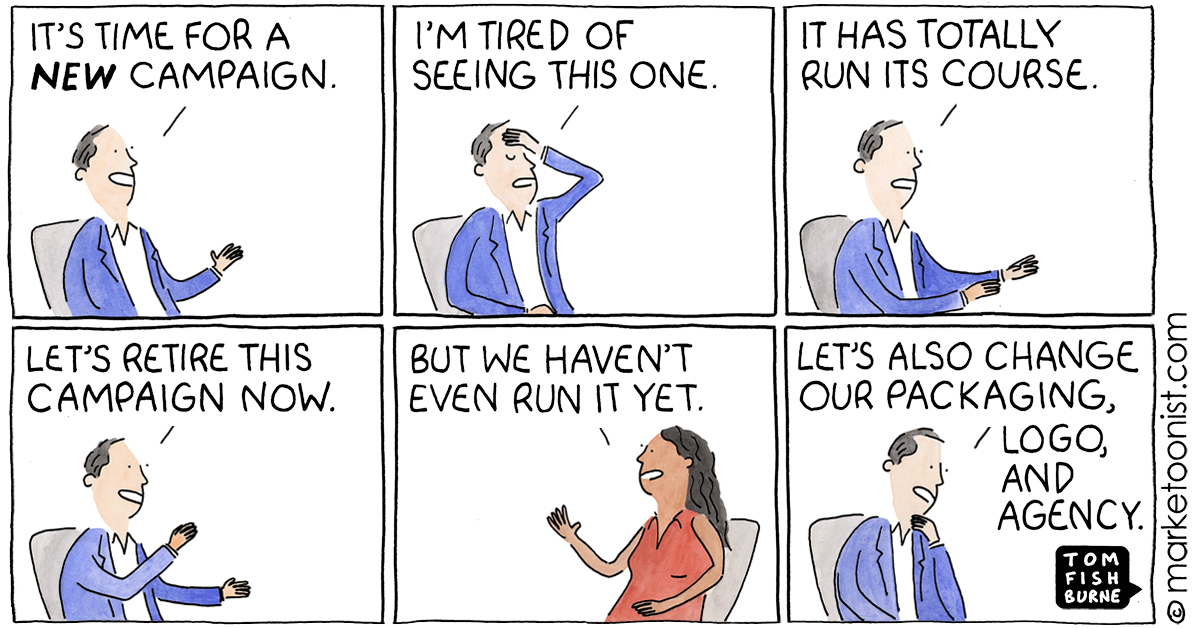
There’s an adage that “Marketers get tired of their advertising before consumers do.” The same is true for all aspects of a brand. A brand team spends so much time surrounded by the same old brand assets, it can be tempting to change for the sake of change. Marketers are also tempted to leave their mark on a brand the moment they join a new brand team.
There are times to refresh a brand so that it doesn’t grow stale. But, as ad veteran Robin Wight once put it, “it’s certainly true that clients throw away brand assets too early.” Consumers don’t think about brands nearly as much as the marketers of those brands, and they not only don’t grow tired as quickly, they rely on those brand assets to shop.
The most famous cautionary tale is the Tropicana 2009 packaging redesign, when PepsiCo completely revamped the North American packaging of their largest fruit juice brand, throwing out most of the visual cues that consumers recognized when they shopped. As the creative agency behind the change put it, “We thought it would be important to take this brand and bring it or evolve it into a more current or modern state.”
Two months later, sales dropped by 20% and Tropicana back-tracked, saying “We underestimated the deep emotional bond they had with the original packaging.”
Brand consistency is an underrated value in marketing. And yet it’s that consistency over time that can create brands that are distinctive, memorable, and valuable.
I like this perspective from Prashant Peres at Mondelez in Indonesia:
“Great brands are true to what the brand stands for … and keep it relevant. If you do that, you are at the highest order of communication and marketing. It’s very exciting for any marketer to come in and say ‘I’ll change this brand, take it to a new space and leave a mark on it.’ But the hallmark of great marketers is taking a brand to the next level without changing it. Brands are built over years and not campaign on campaign.”

